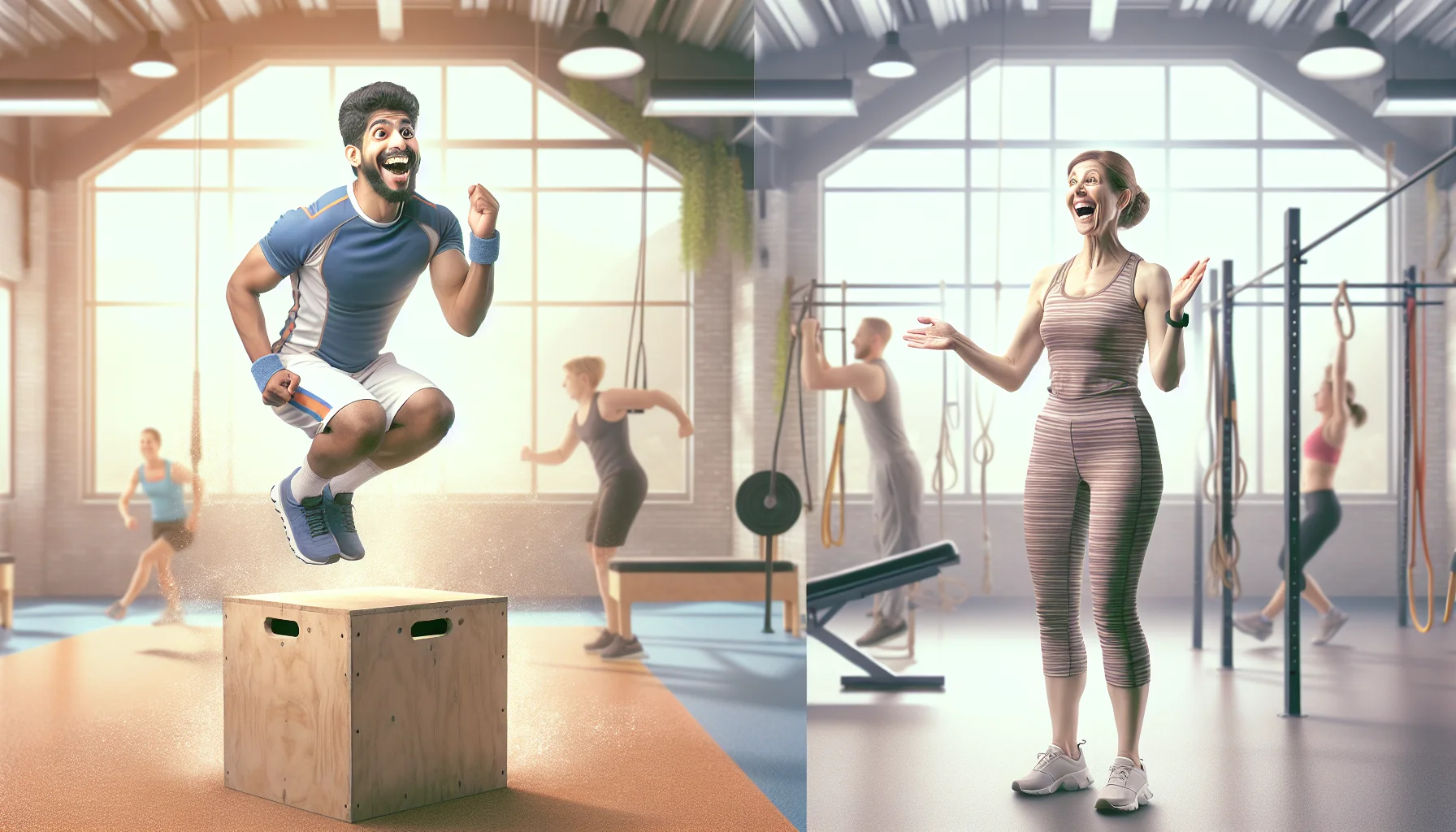Plyometrics vs calisthenics Quiz
Test Your Knowledge
Question of
Plyometrics vs Calisthenics: An Overview
Plyometrics and calisthenics are both forms of exercise that focus on using bodyweight as resistance, but they serve different purposes and involve different techniques. Plyometrics, also known as jump training or plyos, involves explosive movements to improve muscular power, speed, and endurance. It includes exercises like jump squats, box jumps, and burpees, designed to increase the power of the subsequent movements by utilizing the stretch-shortening cycle of the muscles. On the other hand, calisthenics involves a variety of movements that aim to improve strength, flexibility, agility, and aerobic conditioning. It encompasses exercises such as push-ups, pull-ups, dips, and leg raises, focusing on muscular endurance and body control. While plyometrics is centered around the idea of jumping and dynamic movements, calisthenics is more about strength and flexibility through static and dynamic exercises.
The Benefits of Plyometrics
- Improves athletic performance
- Increases power and explosiveness
- Enhances coordination and agility
- Boosts cardiovascular health
- Strengthens muscles and joints
- Promotes weight loss and fat burn
- Improves balance and stability
- Can be done with minimal equipment
- Enhances overall fitness and functionality
The Advantages of Calisthenics
- Improves physical strength
- Enhances flexibility
- Builds endurance
- Requires minimal equipment
- Can be performed anywhere
- Improves body coordination and balance
- Supports weight management
- Boosts mental health
Comparing the Intensity and Impact
| Aspect | Plyometrics | Calisthenics |
|---|---|---|
| Intensity | High, involves explosive movements | Varies, can range from low to high |
| Impact on the Body | High impact, can be stressful on joints and muscles | Low impact, focuses on natural body movements |
| Suitability for Different Fitness Levels | Best suited for intermediate to advanced | Suitable for all levels, from beginner to advanced |
Incorporating Plyometrics and Calisthenics into Your Routine
Combining plyometrics and calisthenics into your fitness routine can significantly enhance your strength, power, and endurance. To effectively incorporate both methods, start by establishing a solid foundation in calisthenics. This involves mastering bodyweight exercises such as push-ups, pull-ups, and squats. Once you're comfortable with these basics, gradually introduce plyometric exercises, like jump squats and burpees, to improve explosive power and speed. Aim for a balanced routine that alternates between these two training styles, allowing adequate recovery time to prevent injury. Remember, consistency and progressive overload are key to achieving optimal results.
Precautions and Considerations
- Always start with a thorough warm-up to prepare your muscles and joints for the high-impact nature of plyometrics.
- Ensure you have a solid foundation in basic strength and fitness before progressing to more advanced plyometric and calisthenic exercises.
- Use proper form and technique to reduce the risk of injury. Consider working with a coach or trainer if you are new to these exercises.
- Incorporate rest days into your training regimen to allow your body time to recover and prevent overuse injuries.
- Wear appropriate footwear that provides adequate support and cushioning for high-impact movements.
- Listen to your body and modify exercises as needed to accommodate any pre-existing conditions or injuries.
- Maintain a balanced diet to support your training and recovery needs.
- Stay hydrated, especially when working out in hot or humid conditions.
- Gradually increase the intensity and complexity of your workouts to safely build strength and endurance.
- Consider the surface you are practicing on; softer surfaces can help absorb impact and reduce the strain on your joints.
Conclusion: Choosing the Right Approach for You
In summary, both plyometrics and calisthenics offer unique benefits for enhancing physical fitness, each catering to different goals and preferences. Plyometrics, characterized by explosive, high-impact movements, is ideal for athletes looking to improve their speed, power, and performance. On the other hand, calisthenics focuses on using body weight for resistance, promoting strength, flexibility, and endurance without the need for equipment. When deciding between the two, consider your fitness objectives, current physical condition, and any existing injuries. It's also crucial to listen to your body and perhaps consult with a fitness professional to tailor a program that aligns with your needs and goals. Ultimately, whether you choose plyometrics, calisthenics, or a combination of both, consistency and proper technique will be key to achieving lasting results.












